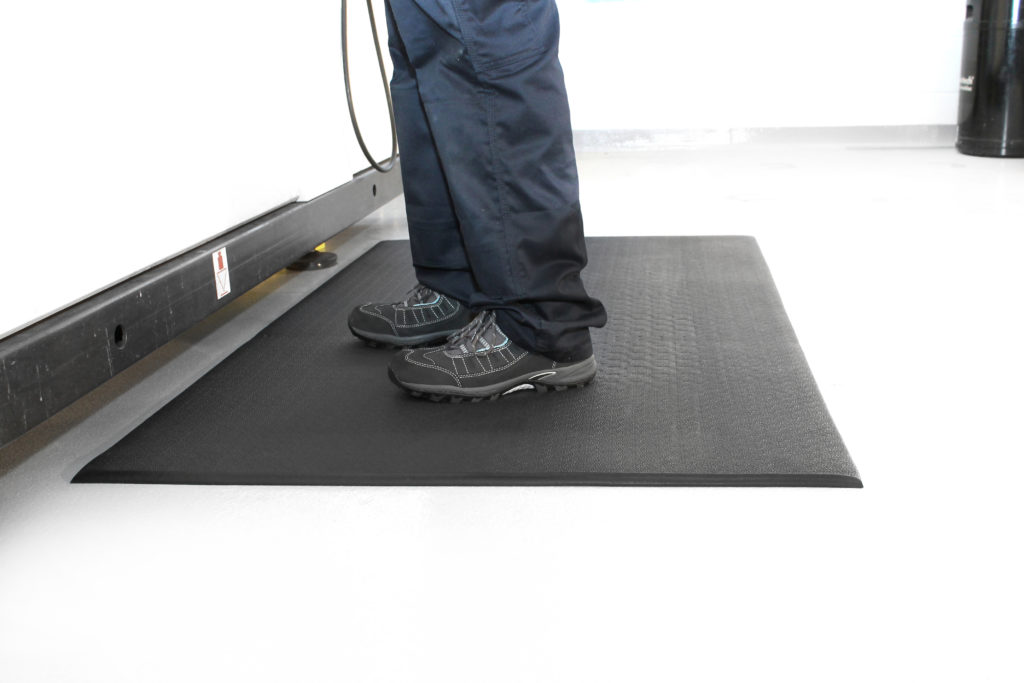The running costs of owning anti-fatigue mats
Buying an anti-fatigue mat for the workplace brings an incredible return on investment as it increases output from your workforce as they are less fatigued throughout the day. In addition to this it reduces the rate of absenteeism caused by Muscular Skeletal Disorders (MSDs), caused by standing on hard floors for long periods of time and over long periods of time this can have significant implications to the financial side of the business.
If you understand that anti-fatigue mats create an incredible return on investment to your workforce then you will also want to know the costs involved with owning your anti-fatigue mats including the initial purchasing cost, the costs involved in cleaning the mat, how often they need to be cleaned and how often they would need to be replaced. Don’t worry, in this blog we will cover everything you need to know about the costs included in owning your own anti-fatigue mat.
The initial cost of an anti-fatigue mat
Within our anti-fatigue product page you can see a wide range of products to choose from with a single 0.9m x 0.76m mat starting at a price of £14.99 (Orthomat Lite Anti-Fatigue) escalating to a 1.2m x 10m heavy duty mat that is £1504.99 (Heavy Duty Woven PVC Anti-Fatigue Mat). However, with many different options and variations available we are sure we can find the right mat for your budget and environment. Included in the range we also have many different variations to choose from included size, colours, hazardous trim, holed, solid etc. Many mats have also been specifically designed for different environments so we would strongly recommend you either use the filter options on the anti-fatigue matting page or visit our blog on ‘what anti-fatigue mat should I choose?’.
The cost to clean an anti-fatigue mat.
Our anti-fatigue mats are either foam or rubber. For foam mats we would advise to clean the mats using a brush to push off most of the debris and dirt and then use a wet cloth or a map to clean them. We would not recommend using abrasive equipment as this can cause wear and tear to the mat. For rubber mats we would recommend the same, a brush followed by either a wet cloth or a mop with warm, soapy water. We would also advise using a pressure washer or a hose if you wanted to for the rubber mats as they are a bit more hard wearing so this won’t cause wear and tear. For all anti-fatigue mats in our range it is extremely cost effective to clean them as the only real cost is for a bit of soap and water.
How often do you have to clean an anti-fatigue mat?
How often you have to clean an anti-fatigue mat really depends on the location and environment the mat is being used in. For example if you are in a wet or oily environment it would need to be cleaned more often than if it was in a dry, oil and chemical free environment. On the whole we would recommend cleaning an anti-fatigue mat every week when you are having a general tidy up or just when you notice the mat looking dirty.
How often would an anti-fatigue mat need replacing?
Replacing an anti-fatigue mat really is dependent on where your mat is placed, the environment it is located, the exposure to liquid and chemicals, the amount of footfall and which mat you have already purchased.
For example if you are using a foam anti-fatigue mat e.g. a Premium Orthomat Anti-Fatigue in a location that has high footfall and using it in an oily and wet environment it will last a lot shorter than a hardwearing Worksafe Anti-Fatigue Mat that is used by a couple of people in a dry packing area.
If you were to buy an anti-fatigue mat such as the Anti-Fatigue Step Tiles the cost to replace the mat might be a lot less as you can just buy a replacement tile rather than a completely new mat. There might be an area where someone stands more frequently or might be a section that gets oils and chemicals more and in this case you can simply replace that anti-fatigue tile with another.
On the whole we recommend that you replace a foam anti-fatigue mat every 1 – 3 years (depending on general wear and tear, environment and other points previously mentioned). However, we suggest every 3 – 5 years for replacing rubber anti-fatigue matting.
Get in touch
If you would like to know any more information then please feel free to contact us and we will be willing to answer any questions you may have on anti-fatigue matting or similarly you can look into our blogs for more information.


